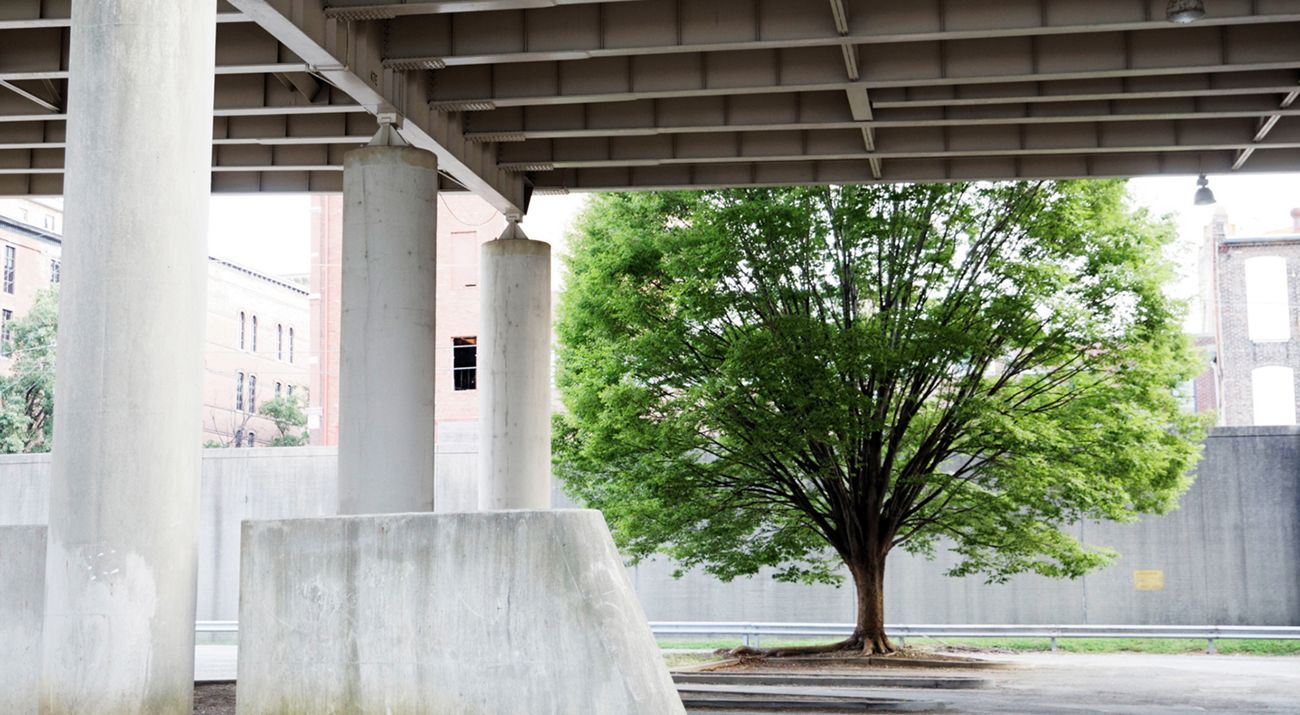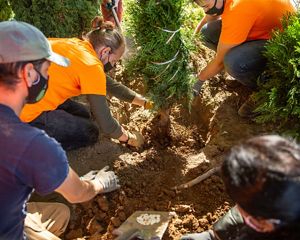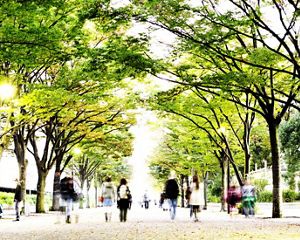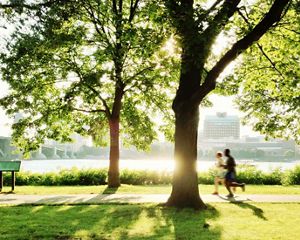Journey to the Coronary Valley
Louisville’s Green Heart Project Tests Nature’s Role as a Prescription for Urban Health
BY MISTY EDGECOMB
Louisvillians will tell you that three things are true: Their fair city should never be pronounced with three syllables, bourbon is no less than a religion, and the air is … bad.
The problem is announced in bright yellow blinking lights — a highway sign warning of an unhealthy air advisory. I arrived in Louisville on the sixth day of an autumn stretch of temperatures over 90 degrees, to air that was officially deemed unhealthy for sensitive populations, including people living with asthma, allergies or heart disease.
In Louisville, that’s almost everyone.
Start talking to local people about the air quality, and you’ll quickly learn that everybody has a story to tell: A child who developed respiratory problems. A parent who died of heart disease. A cough that miraculously clears up when they leave town but comes creeping back after they land at SDF.

Local community activists say that the air in Louisville takes years off your life, regardless of your overall health status. In recent years, the city has received failing grades from the American Lung Association in its annual State of the Air report.
Jokes about “the coronary valley” and “the Louisville hack” belie a serious problem that makes Louisville the perfect urban laboratory for seeking new solutions to a pervasive issue that faces cities large and small, from Beijing to Bakersfield: Unhealthy air.
Now, a coalition of public health researchers, conservationists and community organizers are banding together to test the effectiveness of urban trees for cleaning the air and improving public health in Louisville. The Envirome Institute at the University of Louisville – working closely with The Nature Conservancy, Trees Louisville, Hyphae Design Institute, and other local partners – is mounting a first-of-its-kind research project.
Known as Green Heart, this ambitious effort will conduct a first-of-its-kind medical study by planting trees in strategic locations across a cluster of Louisville neighborhoods and observing precisely how they impact residents’ health.
“Essentially, we’re designing a big clinical trial where nature is the medicine,” says LaTresse Snead, director of the Build Healthy Cities program at The Nature Conservancy.
And if this innovative project succeeds, it would transform how cities plan for public health by offering a model for how and where to plant trees for the greatest medical benefit, explained Dr. Ray Yeager, PhD, a researcher with the University of Louisville Medical Center lab that’s leading the project.
Globally, the United Nations estimates that about 4 million people die each year due to the consequences of outdoor air pollution. Millions more suffer heart disease, asthma or strokes that are exacerbated by pollution. Cities all over the world are seeking solutions.
“What we learn in Louisville is going to affect people all over the world,” Yeager says.
The Green Heart Project
When Dr. Aruni Bhatnagar, MD, of University of Louisville Medical Center first started talking about a study to test trees as a medical intervention, even his fellow researchers thought the idea sounded crazy.
Led by Dr. Bhatnagar, these scientists basically created the field of environmental cardiology. They’re presently working on a study of “forest bathing” – how trees can chemically affect human stress levels. They’re accustomed to thinking outside of the box.
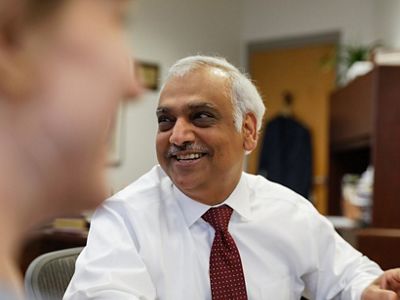
But a controlled experiment testing nature as though it were a drug? A neighborhood is not a laboratory, where variables are easily controlled. And this project would be far beyond the scale of prior research that identified connections between neighborhood greenness and health.
“There has never been a rigorous scientific study that quantified the health effects of urban greening,” says Bhatnagar. “This will be the first attempt to understand, is nature a viable, replicable therapy?”
Yet, as other partners joined the coalition, tracking a causal relationship between nature and health began to seem possible. The Institute brought expertise in citizen science, The Nature Conservancy brought ecological data to guide which trees and where they should be placed for the greatest benefit, and Hyphae Design Laboratory brought experience in urban planning and green infrastructure design. The project has secured funding from The National Institutes of Health and several philanthropists with Louisville ties.
The Green Heart Project officially launched with a community workshop in late October 2017, timed to the start of baseline data collection. Temperatures, particulate matter levels, volatile organic compounds in the air will all be tracked by a network of more than 50 passive air monitors as well as more elaborate monitoring arrays mounted on towers and even an electric car.
Then, during the fall of 2018 The Nature Conservancy and other Green Heart partners began planting as many as 8,000 trees, shrubs and other plants — many of them mature specimens — in South Louisville.
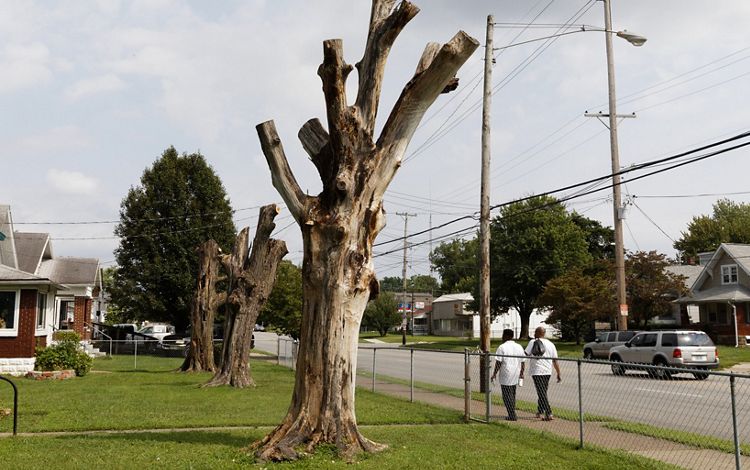
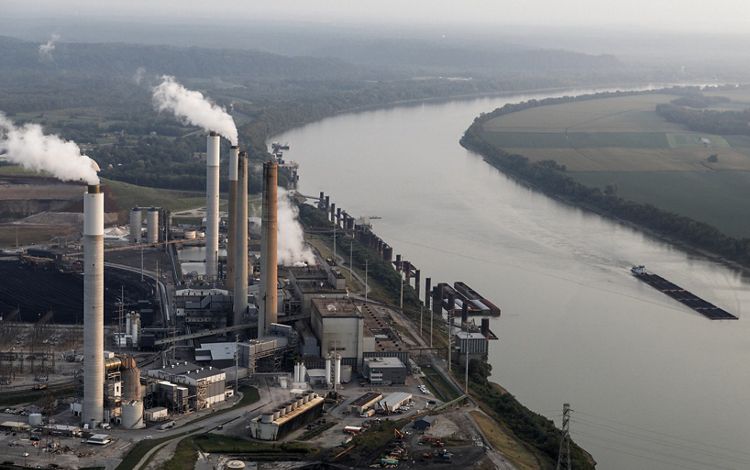
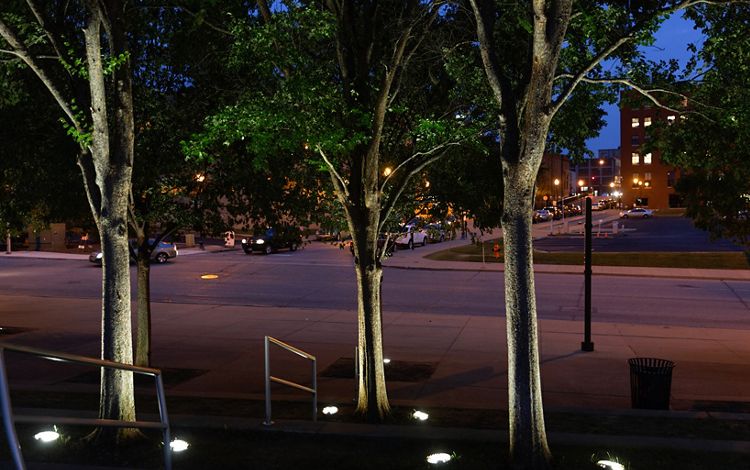
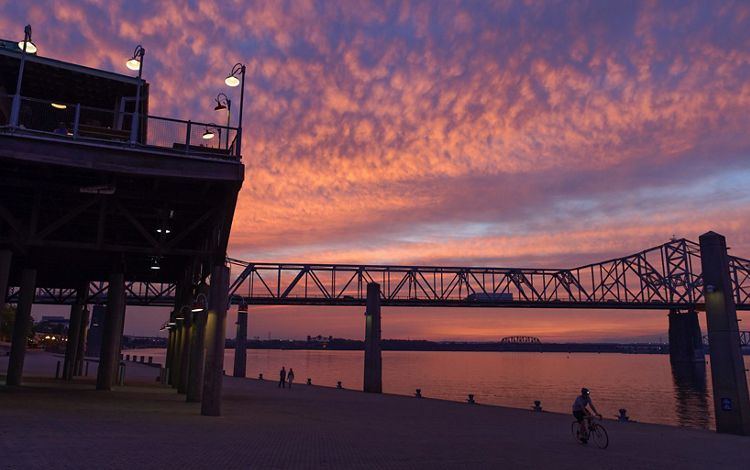
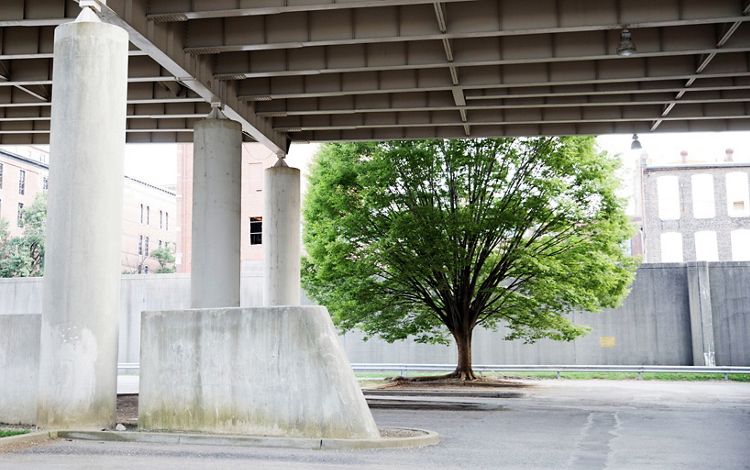
The project has recruited 700 neighborhood residents to participate in several rounds of medical tests, tracking the residual evidence of air pollution in their blood and urine. Dozens of different chemical signals will be monitored, including the presence of cortisol and adrenaline that are produced when the body is under stress. Participants’ physiological reactions to air pollution will be studied over five years, because some compounds appear within hours of exposure while others take months or years to emerge.
“This is where we transform urine into data,” says Yeager with a smile, during a tour of his lab. “We’re essentially relying on people to volunteer as human environmental monitors.”
The end result will be a bank of medical data that tells the story of neighborhood residents’ heath, both before and after trees are planted, as well as data from those who live in nearby areas that will not receive trees.
Quote: - Dr. Aruni Bhatnagar
This will be the first attempt to understand, is nature a viable, replicable therapy?"
Our Friends and Family Breathe This Air
A nitrogen flare atop a factory stack glows against the bright summer sky, hovering over a large American flag. A freight train rumbles by as if on cue, tankers and boxcars delivering the flotsam and jetsam of industry. The air feels heavy, with a scorched smell that’s hard to place.
This is Rubbertown, a neighborhood in West Louisville where 11 large chemical plants account for more than 40% of emissions in Jefferson County. Still an active industrial center, this part of Louisville made its name on chemical production, rubber manufacturing and the overwhelming amount of shipping that kept these engines of commerce firing. Today, it all seems a bit shabby —ghosts of an industrial past. Shiny pickup trucks from Detroit are still clustered behind the barbed-wire fence, but there are a lot fewer trucks than there used to be.
Just a few blocks away, two little girls are jumping on a trampoline in their front yard, laughing and taking deep breaths as they play. Even here, a stone’s throw from some of the city’s most significant pollution sources, the problem is largely invisible. There’s no smog like the dark clouds that envelop Beijing or the haze that hovers over Los Angeles — just a clear blue autumn sky.
“It’s continuous. It’s pervasive. We don’t have a choice. Our friends and family all breathe this air,” says Chris Chandler, urban conservation director for The Nature Conservancy in Louisville.
You might travel several blocks of boarded-up buildings with no trees on anyone’s front lawn, just cracked asphalt baking in the sun; then come upon an enclave of snug little brick houses with flowers by the porch and big old ash trees shading the front walk.
“You can’t see any smokestacks from here. It’s out of sight, out of mind. There’s a beautiful blue sky … how could anything be wrong?” explains Eboni Cochran. Cochran leads a local community organization called REACT: Rubbertown Emergency ACTion. The grassroots group was the first to address the city’s air pollution issues, working primarily in the West Louisville neighborhoods that border the industrial zone.
You might travel several blocks of boarded-up buildings with no trees on anyone’s front lawn, just cracked asphalt baking in the sun; then come upon an enclave of snug little brick houses with flowers by the porch and big old ash trees shading the front walk.
“You can’t see any smokestacks from here. It’s out of sight, out of mind. There’s a beautiful blue sky … how could anything be wrong?” explains Eboni Cochran. Cochran leads a local community organization called REACT: Rubbertown Emergency ACTion. The grassroots group was the first to address the city’s air pollution issues, working primarily in the West Louisville neighborhoods that border the industrial zone.
Quote
You don’t need to be an environmentalist to advocate for a cost-effective solution that could keep your kid’s asthma in check.
Like so many American cities, Louisville faces unequal health impacts from pollution. The life expectancy in the city’s leafy suburbs is as much as 13 years longer than that of neighborhoods in the city’s south and west with lower average incomes and less access to nature — zip code is a reliable predictor of health here. Income disparity, diet, smoking rates and a web of countless other interrelated factors affect life expectancy. But adding more nature to a city can address some aspects of this inequity.
Too often, Cochran’s neighborhood —and many others in this city —are portrayed as simply “dangerous” in news reports, she says. It’s true that crime is a challenge, just as unemployment and addiction are top-of-mind for people who care about their city.
But in this city where historic racial segregation still shapes neighborhood identity, fidelity to your own little corner of Louisville is a core value. There are people who live their whole lives on the city’s East Side, never traveling to the West, and vice versa. It’s a city of distinct neighborhoods, each with its own deep cultural identity and people who love it.
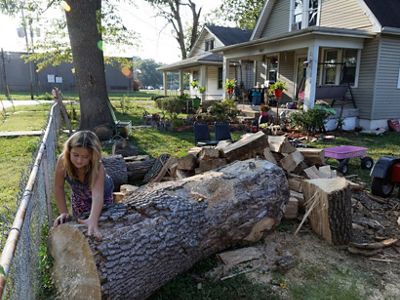
That makes the community element of the Green Heart Project critical, says Combs. More than 200 community groups exist in the South Louisville neighborhoods where the Green Heart Project will take place, and from churches to community centers to schools, the project aims to work alongside them. Trees won’t survive, bringing their benefits to generations of Lousivillians, without local people to advocate for their care.
Neighborhoods where Green Heart recruited its participants lie South and East of Rubbertown, along the path of prevailing winds that carry pollution from Indiana and Illinois, as well as from local industry. Here, too, people don’t always connect the omnipresent health issues with air pollution or a lack of street trees.
Jennifer Nunn lives in Oakdale, one of the middle-class South Louisville neighborhoods within the project footprint. It’s always been home, a neighborhood full of families with deep roots in the community, but a community activist and resident, Nunn sees a substantial challenge ahead. People love their neighborhood, but tree planting may not be a top concern. Local supporters believe that Green Heart will succeed because health is universal—you don’t necessarily need to be an environmentalist to advocate for a cost-effective solution that could keep your kid's asthma in check.
“It’s preventative care for the whole community,” Snead explained. “Together, we can build a city that addresses the potential that people will face health challenges simply because of where they live.”
And providing people with the opportunity to join citizen science efforts that connect the dots between trees and heart disease can give them a role to play in making their block a better place for their families to live.
“We all want to see a safer, healthier neighborhood,” Nunn says. “One success will get people’s attention, then it will spread, it will grow.”
Quote: - Chris Chandler
Towns like Louisville are where you roll up your sleeves and get things done."
Tree Loss is a Public Health Crisis
Chris Chandler stands under a leafy branch in Wyandotte Park — the very heart of the Green Heart Project area, and points to large ash trees that were planted when the park was built 80 years ago. These are some of the biggest trees in the neighborhood, and they’re all at risk.
The city’s air quality problems are exacerbated by a loss of urban trees. Nationally, cities are facing reduced budgets for trees. In Louisville, the tree planting budget has been zeroed out for several years, while maintenance funding was halved. Meanwhile, new invasive insects, such as the emerald ash borer, are claiming many of the big old trees. Recently, Green Heart was able to treat some of the biggest trees, offering protection against disease, and saving these critical community resources, but the challenge remains.
“We’re losing 150 trees per day in this city,” Chandler says. “It’s ecologically alarming, but this is also a public health crisis.”
Download
-
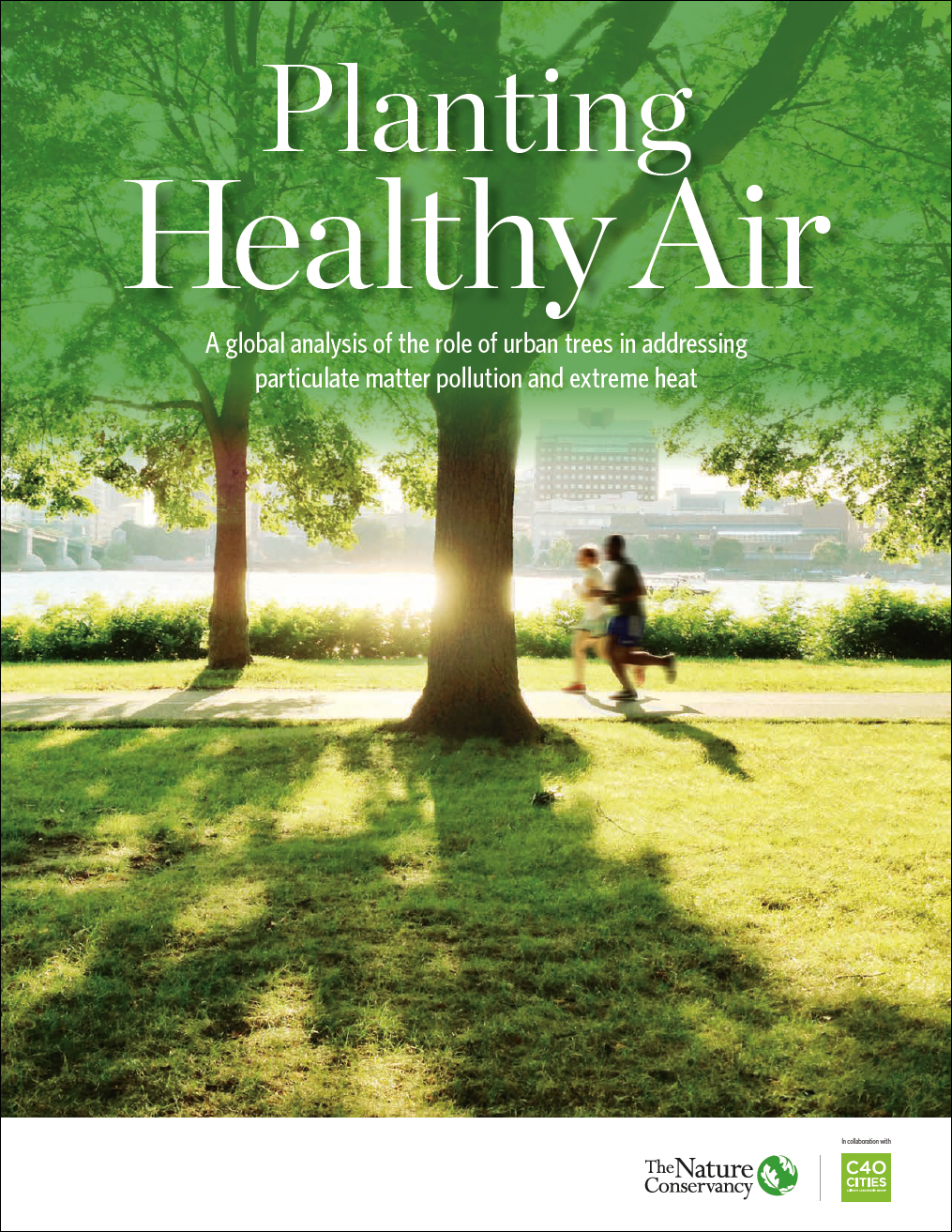 Planting Healthy Air
Planting Healthy AirThe Planting Healthy Air report documents which cities stand to benefit most from tree plantings, and how much investment would be required.
DOWNLOAD
Trees address air quality in several ways. Yes, trees take up carbon dioxide and release oxygen when they photosynthesize, just as you learned in grade school science. But they do much more than that. The fine hairs on trees leaves can actually trap fine particulate matter pollution — a component of both automobile exhaust and power plant emissions — reducing pollution levels near a tree by as much as a third.
And fine particle pollution is a particular concern for public health, as the particles are so small that they can actually pass into the bloodstream, causing heart disease and strokes.
Trees also form physical barriers to block pollution. In fact, one key element of Green Heart is the addition of trees and shrubs along highways — a strategy that a small previous study at a Louisville school suggests can reduce pollution levels in adjacent areas by as much as 60 percent.
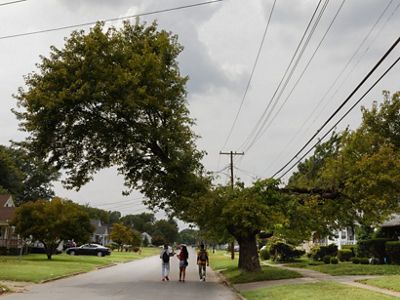
Louisville loses about 55,000 trees of its 3.3 million trees each year. Bringing the entire city to the level of tree canopy that researchers hypothesize would provide preventative medicine would cost millions of dollars. Few cities are making that level of investment in urban trees today, Chandler says. But Green Heart seeks to demonstrate that when planting is done where it will have the most benefit, the reduction in healthcare costs, in sick days and lost productivity, can cover much of the cost of urban greening.
The project’s findings will help communities prioritize their efforts and could open the door to new sources of funding for urban greening, as conservationists build partnerships with the public health community.
“All cities are cash-strapped. They’re looking for information on the right place to plant the trees to see the best return on their investment, the biggest benefit for their people,” Chandler says.
Louisville is the perfect urban laboratory — it’s big enough to face urban challenges, but small enough that coalitions like Green Heart can come together to make things happen quickly, he says.
“Towns like Louisville are where you roll up your sleeves and get things done,” Chandler says.
Resources
-

Planting Healthy Air Report
The report shows that even a conservative global investment in urban trees can save tens of thousands of lives. More Information
DOWNLOAD -
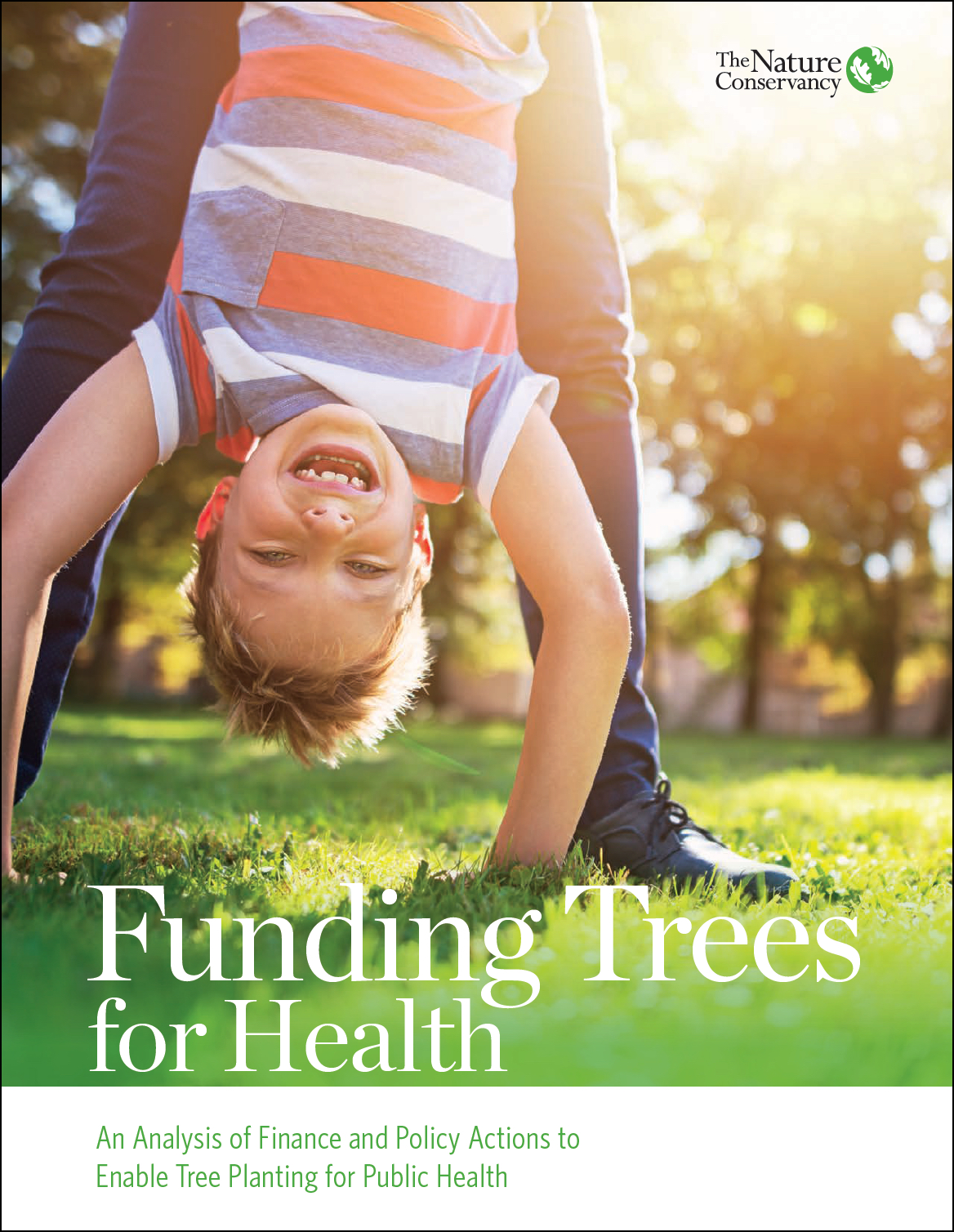
Funding Trees for Health
An analysis by The Nature Conservancy on finance and policy actions to enable tree planting for public health. More information
DOWNLOAD
Global Insights
Check out our latest thinking and real-world solutions to some of the most complex challenges facing people and the planet today.
